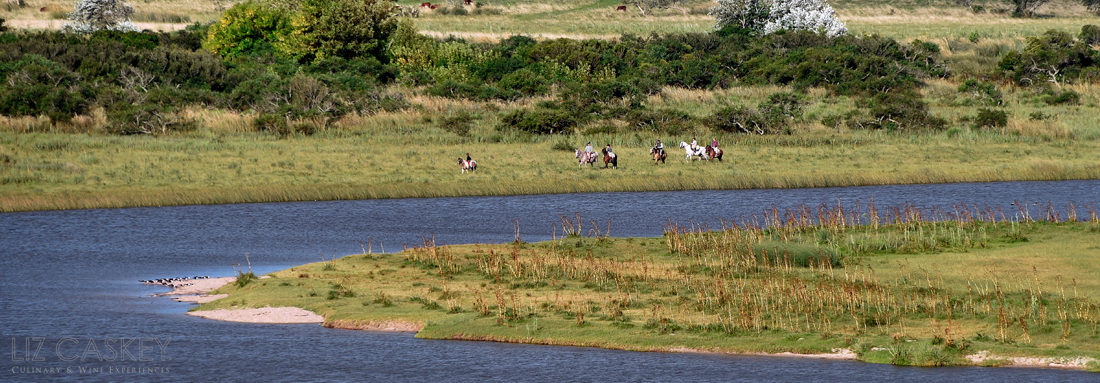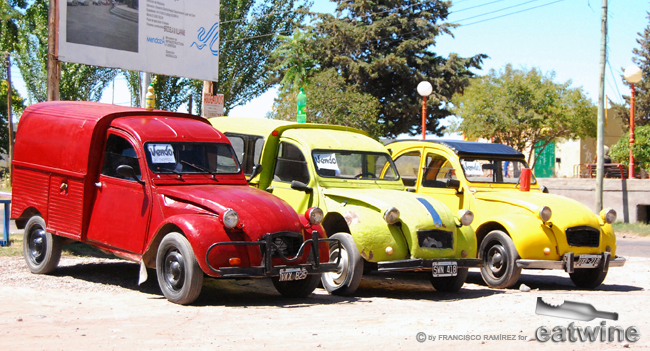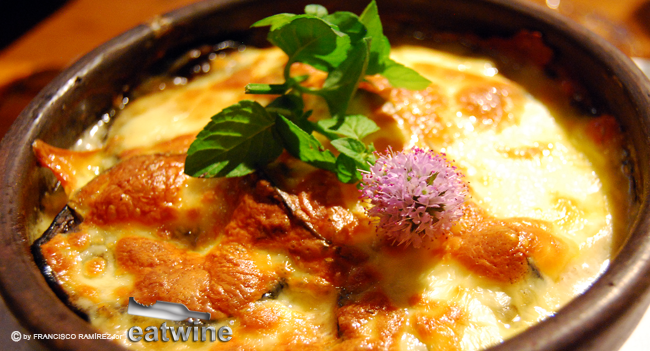Mendoza, fittingly known as the Tierra del Sol, is a sun-drenched land that, in actuality, is an irrigated scrubland in the arid rain shadow of the towering Andes. Most of Mendoza remains a desert although parts of it were converted into a series of oases over 700 years ago by irrigation channels built by the Huarpe Indians. Mendoza is Argentina’s largest and most important wine growing region, accounting for the vast majority of the country’s vineyard acreage (over 350,000 acres) and wine production (around 75% or more). For you visual learners, check out our post Mendoza in Pictures for a stunning introduction to the area.
Within the Mendoza region, there are five specific micro-regions that contain many micro-climates and soil types. These areas, ranging from 2,000 feet above sea level up to the Andean plateau at 5,000 feet are alluvial, meaning that they have been formed by melting ice water descending from the Andes Mountains. This water, as it travels down the mountains, pulls in various soil elements and minerals, depositing them as pockets of stony, sandy, loam, and clay soils. While the general soil quality in Mendoza is poor, what differs vineyard to vineyard is the distance from the Andes and the layering of the soils from the water runoff. Oh what fun it is, exploring Mendoza wine country.
Here’s a primer of the five sub-regions in Mendoza to start appreciating and recognizing the distinct characteristics that the soil, climate, altitude give to the grapes. Ever wonder why there’s so much Malbec? This is why. There are a myriad of terroirs—and expressions.
Luján de Cuyo
Due south of the city of Mendoza, and named after the town of Luján, this region stretches along the Andean foothills as it rises to the west. The wineries surrounding this area of Mendoza have been widely acclaimed abroad for its world class Malbec with three of Argentina’s recognized Denominaciones de Origen (DOC) of Vistalba, Agrelo, and Pedriel. With the snow-capped Cordón del Plata always in the distance and the gentle slope of vines, many Malbec vineyards in this area were planted over 100 years ago and today achieve low yields and high concentration with elegant tannins. Here, high caliber wines like Fabre Montmayou, Achaval Ferrer, Norton, Dominio del Plata, and Catena Zapata (among many others) call this area home. Most vineyards range from 2,000-3,500 feet above sea level and the oscillation in temperature creates fine aromas and good acidity. Soils here are quite varied depending on how close vineyards are to the mountains or Mendoza River, and tend to form alluvial layers of loam, rock, and gravel. Besides Malbec, there are also good examples of Cabernet Sauvignon, Syrah, and even Sauvignon Blanc being produced here.
Uco Valley
Located fifty miles south of Mendoza and stretching for another 50 miles, Uco Valley is another “oasis” that is both an irrigated agricultural corridor for fruits and vines in the shadow of the Andes. Here, the altitude increases considerably from 3,000-5,000 feet with very poor stony soils, which gives winemakers the gift of seeking cooler temperatures and longer ripening periods. Cutting edge wineries dot the landscape like Clos de los Siete, Salentein, and O. Fournier. Given the altitude, there’s a huge variation in thermal amplitude that can range over 30 degrees Fahrenheit, infusing the red grapes with intense colors, floral and fresh fruit aromas, vivacious tannins, and longevity in the bottle with its higher acidity. This region has also been leading the production of a smattering of good acid Chardonnay, Semillon, and Viognier, in addition to the classic Malbec and Cabernet Sauvignon. Within this valley, considered one of the premier in Argentina, you’ll hear names of the villages dotting the landscape as the local appellations like La Consult, Vista Flores, Tupungato, Tunuyán, Altamira, Gualtallary, and San Carlos.
Maipú
Head southeast from Mendoza on the other side of Route 40, this area is quickly on the path to gaining its own appellation with areas like Lunlunta, Cruz Piedra, Las Barrancas, and Mayor Drummond, all turning heads with knock-out wines, different in expression than their Luján neighbors only a few minutes away. Located at 2,600 feet above sea level, the large, rocky soil tends to cover much of the vineyards here. Malbec is still the star grape here although fine expressions of Cabernet Sauvignon (less fruit, more minerals) are surfacing in the market. The wines tend to have deep flavors, structure, and are more robust.
South Mendoza
Over 80 miles south of Mendoza city, San Rafael Valley was the first Argentinean wine region to gain DOC status. Irrigated by the Atuel and Diamante rivers, the landscape is a gentle slope from 2,600 feet to 1,500 feet near General Alvear. Soils tend to be alluvial over limestone and while it’s very dry, this area of Mendoza has major problems with hailstorms in the summer time with intense heat. Top Malbec from renowned producers like Enzo Bianchi or Alfredo Roca are references from this little-visited area.
North Mendoza
Lying to the north and east of the city, this plain is 2,000-2,500 feet above sea level with poor, sandy loam soil irrigated by the Mendoza River. In this area of Mendoza, the high salinity in the soil leads to considerably less acidity. This area has boomed with Bonarda and Sangiovese, wines meant to be consumed young and abundantly along with white grapes like Chenin Blanc and Pedro Ximenez.
Let’s talk grapes for a little. I know, I know, it’s Malbec, malbec, malbec. Well, that’s certainly true and malbec is the superstar grape on this side of the Andes. However, during recent trips and tastings other grapes can certainly hold their own. This is not an exhaustive review of them but two varietals, a red and a white, that grabbed me on my last visit and are a force to be reckoned with. Keep your eyes peeled and tastebuds tuned for what’s coming–herbaceous Cabernet Franc, mineral-laden (no fruit bombs!) Cabernet Sauvignon, silky Merlot, bold, jammy Syrah, earthy Bonarda, and heady Tempranillo are here to stay.
Cabernet Franc
It may have been Malbec Madness in Argentina over the past years but what’s coming up, in a big way, is Cabernet Franc. Seriously? Sí, amigos. Cabernet Franc, along with Cabernet Sauvignon and Merlot, is the holy trinity of many of the world’s top wines from the Bordeaux region of France. Cabernet Franc as a grape is less tannic and acidic than Cabernet Sauvignon and has a markedly herbaceous, peppery note note that cleanses the palate as you sip. For this reason alone, it’s a go-to wine for blends since it adds complexity while also “lightening up” the blend. Some favorite examples are Bressia’s Monteagrelo with its freshness and notes of pepper; Benegas Lynch single vineyard with notes of smoke, tobacco and cherries, or Andeluna’s Pasionado, an unusual blend of green peppers and red fruit notes with a pliable, soft texture.
Torrontés
Torrontés is finally having its day. Many US media outlets declared it as the “next Pinot Grigio” last summer. Certainly Torrontés is a rustic grape that has adapted incredibly well to high altitude and high UV exposure with its shady trellising that keeps much of the canopy and the grapes from burning. Traditional Torrontés tends to taste grapey while the newer generation of winemaking has them coming to market wit bone-crushing acidity reminiscent of a Sauvignon Blanc and citrus notes. Much of Torrontés is grown in Salta, in the northwest, although Mendoza does have some heavy contenders like winemaker Susana Balbo’s zesty Benmarco and Crios Torrontés (Dominio del Plata); Zorzal’s Terroir Único from Tupungato, a dry, austere, refreshing version; and a perennial favorite the snappy Altavista Premium Torrontés (winery in Chacras de Coria but grapes from Salta) with its electrifying acidity, citrus flavors, and modern style.
Mendoza wine country is one of the stops on our Southern Cone Sampler Signature Journey this coming April 11-19, 2014. We´d love to have you join us for a deep (not to mention tasty!) exploration into South American wines.





















